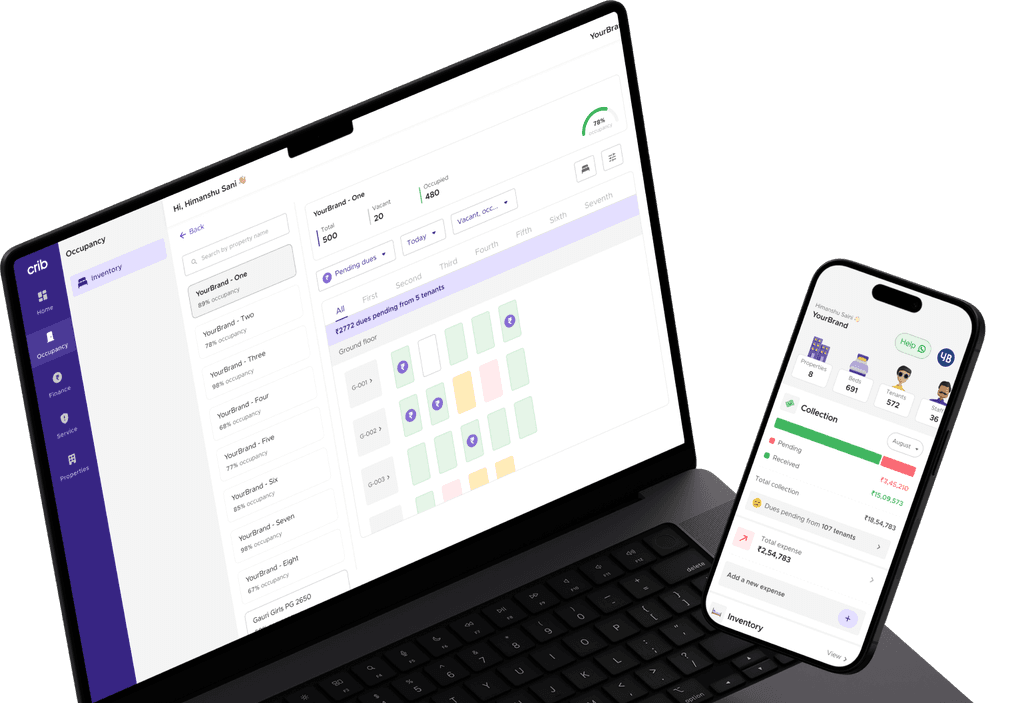Boost property value and tenant satisfaction by streamlining property maintenance. Embrace technology for efficient solutions. Contact us today!
A property manager has several responsibilities that are certainly challenging to manage. There will be several tasks that may need your attention, and you can prioritise some while leaving others for later.
As a property manager, tenant satisfaction is your top priority. However, when you multitask manually, there is a high chance of missing tasks requiring immediate attention. Falling behind on property maintenance can lead to costly repairs and unhappy tenants.
Encouraging technology and implementing efficient processes can keep everything on track. Below are key strategies for streamlining property maintenance.
1. Implementing Technology for Maintenance Management
Technology is transforming property maintenance, making it easier and more efficient for managers to handle repair requests, track tasks, and ensure timely maintenance. Here are some ways to use technology effectively:
Online Maintenance Requests for Tenants: Allowing tenants to submit requests digitally ensures that issues are logged in a structured system, reducing the risk of missed or overlooked tasks.
Automated Work Orders and Task Tracking: A centralised digital system can automatically generate work orders and assign tasks to the right personnel based on priority.
Real-Time Updates and Communication: Property managers can update tenants on the status of maintenance requests, ensuring transparency and improving tenant satisfaction.
Data-Driven Insights for Proactive Maintenance: Maintenance software can analyse historical data to predict maintenance needs, helping prevent costly emergency repairs.
2. Building and Maintaining a Reliable Contractor Network
Having a dependable network of skilled contractors ensures that maintenance tasks are handled efficiently and professionally. Here’s how to build and sustain such a network:
Research and Vet Local Contractors: Identify experienced professionals in your area and verify their credentials before onboarding them.
Include Diverse Skill Sets: Ensure your network has specialists like electricians, plumbers, and general maintenance workers to cover all property needs.
Establish Clear Communication and Set Expectations: Clearly outline job requirements, deadlines, and quality standards to maintain consistency in service.
Negotiate Competitive Rates and Perform Regular Reviews: Regularly assess contractor performance and pricing to ensure cost-effective and high-quality services.
3. Empowering Tenants Through Self-Service
Empowering tenants to report maintenance issues and track their requests through a self-service system enhances efficiency and reduces the workload on property managers. Consider the following:
Enable Tenants to Submit and Track Maintenance Requests: A digital platform allows tenants to log issues, attach images, and monitor progress without requiring constant follow-ups.
Provide Guidelines for Reporting Minor Issues Promptly: Educating tenants on basic troubleshooting for small issues (like resetting a circuit breaker) can prevent unnecessary service calls.
A well-structured digital system improves workflow by ensuring that no requests go unnoticed. Additionally, online maintenance requests allow property management teams to focus on resolving problems rather than spending time answering maintenance-related calls.
4. Automating Maintenance Workflow
Automation reduces manual intervention and speeds up maintenance processes. Here’s how to automate workflow for better efficiency:
Assign Tasks Based on Priority and Track Them Efficiently: Automated systems can categorise and prioritise maintenance tasks, ensuring urgent issues are handled first.
Use Software Tools to Coordinate with Vendors and Schedule Maintenance: Digital platforms streamline scheduling, sending automatic notifications to vendors for upcoming maintenance jobs.
Implementing these four strategies can help you prioritise preventative maintenance and foster strong relationships with tenants, which are key steps toward a streamlined and efficient property maintenance system.
How Crib Can Help You Streamline Your Property Maintenance
Crib is an all-in-one property management platform designed to simplify and enhance property maintenance processes for both tenants and property managers. Here’s how Crib can help:
Quick and Easy Online Maintenance Requests: Residents can submit requests digitally from their phones or computers, eliminating delays and miscommunication.
Image and video Uploads for Better Issue Clarity: Tenants can provide visual evidence, helping the maintenance team diagnose problems accurately and respond efficiently.
Real-Time Status Tracking: Residents can monitor the progress of their requests, reducing uncertainty and improving satisfaction.
Automated Task Assignment: Property managers can quickly assign requests to the right professionals, ensuring that maintenance issues are handled promptly.
Detailed Invoice Generation: Crib helps in managing finances by generating clear breakdowns of expenses related to maintenance work.
By implementing Crib’s technology, you can streamline your workflow, improve communication, and ensure maintenance tasks are handled efficiently. If you’re ready to simplify property maintenance and enhance tenant satisfaction, visit our website today and request a demo!
Frequently Asked Questions (FAQs)
Q1. What is the biggest responsibility for property management?
The biggest responsibility in property management is maintaining tenant satisfaction while ensuring the property remains in good condition. This includes handling maintenance requests promptly, managing finances, enforcing lease agreements, and ensuring compliance with local regulations. A well-managed property leads to higher tenant retention and increased property value.
Q2. What are the three main types of maintenance requirements for managed properties?
The three main types of maintenance for managed properties are preventative maintenance, corrective maintenance, and deferred maintenance. Preventative maintenance involves regular inspections to avoid major issues. Corrective maintenance addresses immediate repair needs. Deferred maintenance includes non-urgent tasks that can be scheduled later without causing significant damage or risk.
Q3. What is the meaning of estate maintenance?
Estate maintenance refers to the upkeep and management of a property, including cleaning, landscaping, structural repairs, and general maintenance work. It ensures that the estate remains functional, safe, and aesthetically pleasing for residents and visitors. Proper estate maintenance enhances property value and provides a comfortable living environment.
Q4. What is maintenance in real estate?
Maintenance in real estate refers to the routine and emergency repairs required to keep a property in optimal condition. It includes plumbing, electrical, HVAC system maintenance, landscaping, and general repairs. Regular maintenance improves tenant satisfaction, extends the lifespan of property assets, and reduces long-term repair costs.


























































































































































































